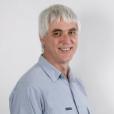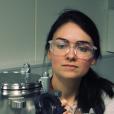
Showing 321 - 340 of 688 results
ANSTO Chair Announcement - Reappointment of ANSTO CEO
The Chair of ANSTO, The Hon Dr Annabelle Bennett, AC SC, announced today that Mr Shaun Jenkinson has been reappointed as the Chief Executive Officer of ANSTO.
Willandra Lakes Elders visit ANSTO to support groundbreaking Lake Mungo research
Earlier this month, ANSTO welcomed a delegation of Elders from the Willandra Lakes Region World Heritage site to its Lucas Heights campus. The visit marked a significant collaboration between Traditional Custodians and scientists working to uncover the environmental history of Lake Mungo.

Statement of Expectations
On the 10th of October 2025, the Minister for Industry, Science and Technology provided his Statement of Expectations to ANSTO.

Accommodation, Meals and Transport - PD Workshop 2025

John Lawson is a Specialist Hydrometallurgist working with the ANSTO Minerals business unit.
Powerful mathematical calculations guide the startup of a nuclear reactor
The nuclear analysis team at ANSTO recently had a significant role in the re-design and optimisation of a cold neutron source facility for the reactor, its installation and the subsequent restart after a six-month shutdown.

User Meeting 2024 award recipients
ANSTO and the User Meeting 2024 organising committee celebrate this years award recipients.

Particle Accelerators
The Accelerator Science group purse a broad research program with the aims of improving the performance and reliability of our accelerators, increasing their research capabilities and developing the next generation of accelerator technology.

Professor Christine Thong leads the academic direction for Design Factory Melbourne at Swinburne University and is involved in a range of teaching, research and strategic initiatives.

Danielle is currently the Acting Senior Principal Scientist, who oversees strategic developments, managing, prioritising and facilitating team interactions, capital and asset management programs and leading improvement initiatives across the ANSTO Melbo
Eureka finalist
Two ANSTO scientists were part of a research team led by the University of Wollongong, who are finalists for the 2019 NSW Environment, Energy and Science (DPIE) Eureka Prize for Environmental Research.
Ceramisphere had its origins at ANSTO
Early research at ANSTO has contributed to development of innovative submicron particle encapsulation technology.
You are what you eat
Cracking the code for crop nutrition and food quality with X-ray fluorescence microscopy.
Sharing expertise with regional neighbours
Participants undertook IAEA training hosted by Macquarie University and ANSTO on use of radionuclides for soil and water investigations.
IAEA Deputy Director General includes ANSTO stops on Australian Tour
Pioneering research has confirmed that the current level of rainfall recharging groundwater in southwest WA is at its lowest for at least the last 800 years
In a world-first study, Australian environmental scientists have used cave stalagmites as a record of groundwater replenishment over time, that showed the current level of rainfall recharging groundwater in southwest WA is at its lowest for at least the last 800 years.
Promising material provides a simple, effective method capable of extracting uranium from seawater
An Australian-led international research team, including a core group of ANSTO scientists, has found that doping a promising material provides a simple, effective method capable of extracting uranium from seawater.
Nuclear science informing risk assessments during offshore decommissioning
Environmental scientists at ANSTO have been undertaking research to gain a better understanding of the potential impact of contaminants on decommissioned offshore oil and gas infrastructure since 2017.